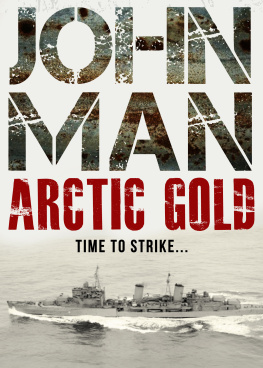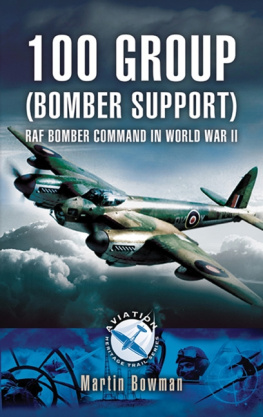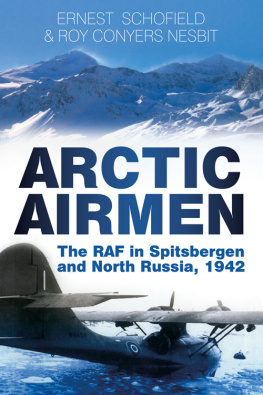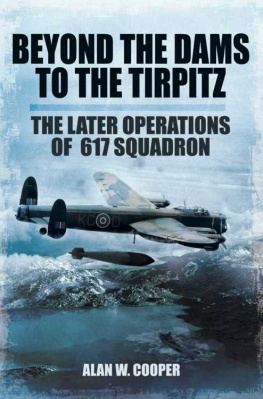
For Tim
W e are very grateful for the help given to us, when researching the material for this book, by officials and staff at the following organisations:
Aeroplane Monthly, International Publishing Corp., Sutton.
Commonwealth War Graves Commission, Maidenhead.
Forsvarsmuseet, Oslo.
General Dynamics, Convair Division, California.
Imperial War Museum, Lambeth.
Ministry of Defence, Air Historical Branch, Holborn.
Ministry of Defence, Naval Historical Branch, Fulham.
Public Record Office, Kew.
Royal Air Force Museum, Hendon.
Royal Geographical Society, Kensington Gore.
Royal Greenwich Observatory, Herstmonceaux.
Royal Norwegian Embassy, Pall Mall.
Scott Polar Research Institute, Cambridge.
Our thanks are also due to those who generously contributed their detailed recollections of the events related in this book:
Sir Alexander R. Glen, KBE, DSC.
Flight Lieutenant Ronald Martin, RAFVR.
Squadron Leader Reginald W. Witherick, RAFVR.
Flight Lieutenant George W. Adamson, RAFVR.
We should like to express our gratitude to Mrs Jean Podlipny and Mr Brian Healy for contributing their recollections of the early life of their brother, Flight Lieutenant Dennis E. Healy, DSO.
For the accounts of the German weather airmen in the Arctic, we have drawn on the research and writing carried out by Herr Franz Selinger, and we are very grateful to him and his colleagues for authorising us to make use of records and photographs.
For translation from Norwegian and German records, we have benefited from the assistance kindly given by Mrs I. Moorcraft and Mr N. Wajsmel, and by the staff of Forsvarsmuseet in Oslo.
Mr Harry R. Moyle was most generous in letting us have the results of his researches into the fates of the Hampdens of 144 Squadron during their flights to North Russia.
We should also like to thank Mr Gordon Railton and Mr Michael H. Nesbit for assistance with copying and improving old photographs, and Mr Peter Nesbit for designing the cover.
Crown copyright material in the Public Record Office is reproduced by permission of Her Majestys Stationery Office.
Finally, we should like to express our gratitude to families and friends for their tolerance and help while we were engaged on writing this book, in a period when unexpected problems caused long delays.
Contents
Appendices
Maps and Diagrams
by Sir Alexander Glen, KBE, DSC
F or many centuries, the Arctic Seas had known only peace. True, skirmishes between Dutch and English whalers troubled the Spitsbergen bays in the seventeenth and eighteenth centuries, but these were limited local affairs and strategic war was unknown.
The Second World War brought abrupt change. The sinking of Hood by Bismarck in the Denmark Strait was the first act in the opening of a new and bitter theatre of operations. Then came the build-up of German naval and air power in northern Norway. When the German onslaught on Soviet Russia took momentum, it might have seemed that the gate was closed on any western attempt to supply her new ally by the Northern Seas.
The Allies took a little time to recognise the new strategic situation. Information on the Arctic Seas was scant enough and almost non-existent about the sea ice, particularly in the narrow and vulnerable channels between North Cape of Norway and Spitsbergen. Flying had been restricted to some four exploratory flights. In any case, the RAF had no aircraft capable of reaching the higher latitudes until it began to receive delivery of the Catalina flying boats. Most important of all, the fortunes of war in 1941 and 1942 were such that survival more than occupied the minds of most. There was little to encourage long-term gambles, or indeed anything beyond the problems of the day.
A few highly placed officers thought differently. The Assistant Chief of Naval Staff, Rear Admiral E.J.P. Brind, and the Director of Operations Division (Home), Captain J.A.S. Eccles, were at one with the director of Naval Intelligence, Rear Admiral J.H. Godfrey, in assessing the appalling problems the northern sea route would pose. In Coastal Command, Air Chief Marshal Sir Philip Joubert, ably backed by an outstanding Senior Air Staff Officer, Air Vice Marshal G.B.A. Baker, had already perceived the contribution that the new very long range Catalinas might make.
If the Falklands campaign was fought at long range, just as extreme were the air and naval operations of 1942/3 over the Arctic Sea. The most critical sector passed through enemy air space and. indeed, what could have been enemy-dominated sea space. The channels between North Cape, Norway, Bear Island and Spitsbergen were especially critical and Spitsbergen itself was a pivotal point.
Allied policy accordingly was to deprive the enemy of the use of Spitsbergen provided this could be done by a small mobile force with minimal demand on the war effort elsewhere. Germanys interest, as this book shows, was significantly different. Logistically they felt stretched far enough in northern Norway itself, and their compelling need in Spitsbergen was for weather stations. It was perhaps hesitancy on the part of the German High Command, shown especially in their failure to deploy effectively their capital ships concentrated in northern Norway, that was to make it possible for the Allies to maintain the northern sea route to Russia, despite appallingly heavy losses in June 1942.
The Allies solution was a small land force of some eighty Norwegians, mostly ex-miners from Spitsbergen, hardy, experienced in polar survival, skilled ski runners, men who regarded the Arctic as their home. How they turned initial disaster into outstanding success is part of the story told in this book.
The other and central part is how one Catalina of 210 Squadron, commanded by Flight Lieutenant D.E. Healy, DSO, and navigated by Flight Lieutenant E. Schofield, DFC, made this possible. In the course of three 24-hour flights in seven days in May 1942, they made contact with the survivors of the original force, re-armed them, then evacuated their wounded, and finally provided the communication link which enabled survival to be turned into attack.
In January 1987, forty-five years later, Ernest Schofield, Ronald Martin (the second pilot) and I attended the opening in northern Norway of the Norwegian Defence Museums exhibition of these events. It included the German activities in the Arctic, including the achievements of the Luftwaffe weather squadrons, as well as those of the Allies. It is good that there should be displayed throughout Norway such a record of how a tiny Norwegian garrison held Spitsbergen, even surviving bombardment of the heavy ships of the German Navy, including Tirpitz. It is also important historically that the contribution made by Tim Healy and his crew, which was vital to the Allied recovery as shown in this narrative, is suitably included in these exhibitions.
The consequences of these events, however, are both greater and longer-lasting than any of us would have thought forty-five years ago. Not only did Spitsbergen remain a free Norwegian territory throughout the war years, it remains so today. Spitsbergens pivotal position has a new and contemporary significance in the context of the massive concentration of Soviet power in Murmansk.
Next page













